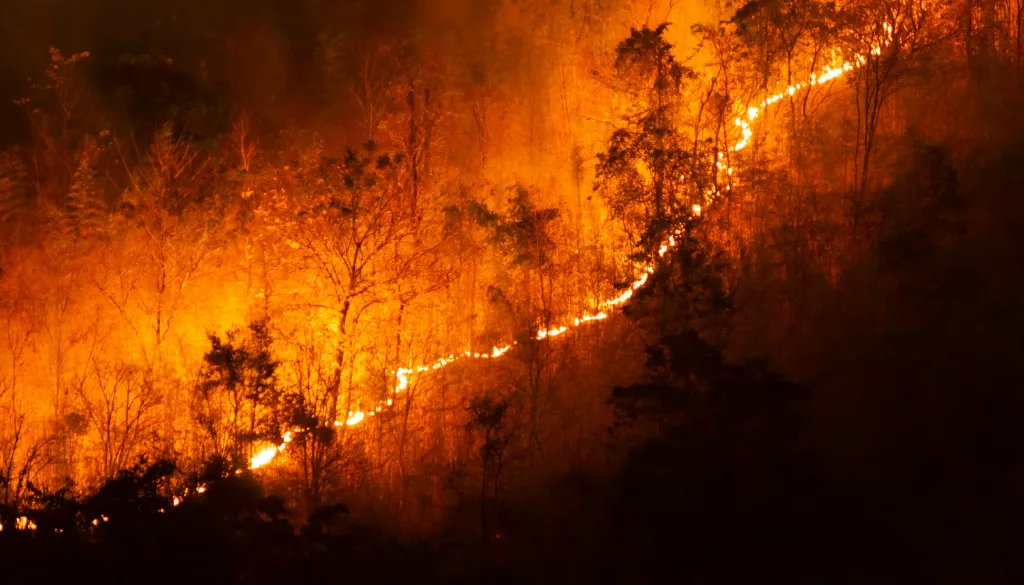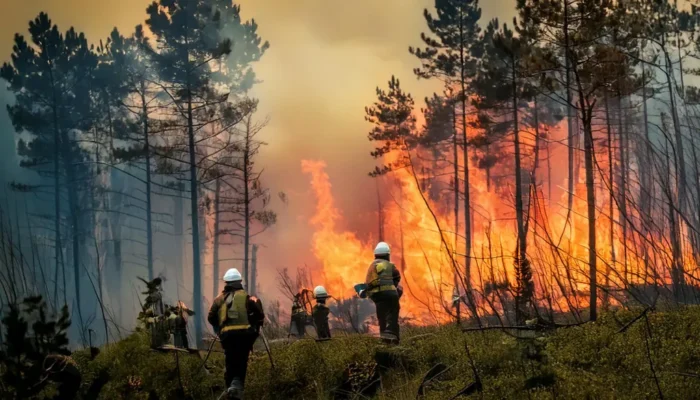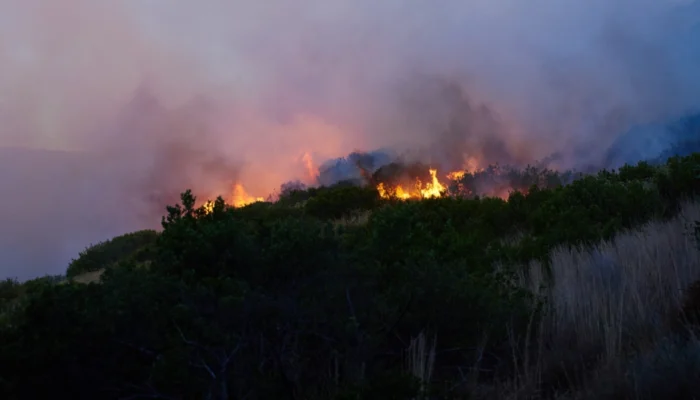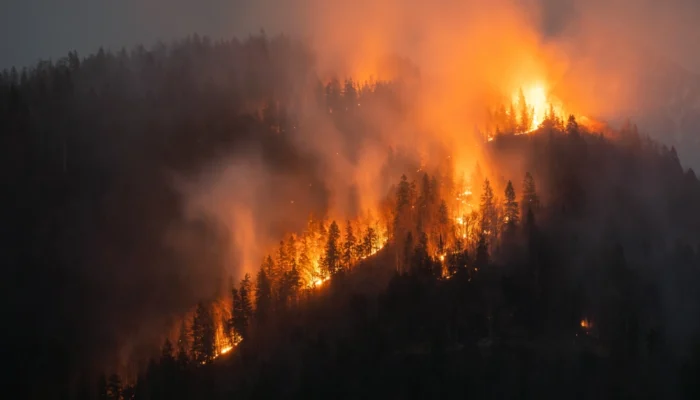In recent years, wildfires have grown more dangerous, more frequent, and more destructive than ever before. Around the world, flames tear through forests, grasslands, and communities, destroying everything in their path. Smoke clouds entire regions, turning skies orange and making the air dangerous to breathe. For many people, wildfires are no longer rare disasters—they are becoming part of everyday life.
The reason behind this rising threat is not a mystery. Scientists and experts agree that climate change and wildfires are deeply connected. Climate change is warming the planet, drying out forests, and creating the perfect conditions for wildfires to ignite and spread. In this article, we’ll explore how climate change causes more fires, how those fires impact people and the planet, and what we can do to stop this cycle.
Table of Contents
ToggleThe Science Behind the Connection
To understand why wildfires are becoming worse, we have to start with the science of climate change. As humans burn fossil fuels like coal, oil, and gas, we release greenhouse gases into the atmosphere. These gases trap heat and make the Earth warmer. Over time, even small increases in temperature have big effects on weather, rainfall, and natural systems.
One of the most important changes is that the air is becoming hotter and drier. A key scientific idea here is called vapor pressure deficit—this is a way of measuring how dry the air is. As the air warms, it can hold more water, which means it sucks moisture out of plants and soil. This turns forests into dry fuel, ready to burn.
At the same time, droughts are lasting longer and becoming more extreme in many parts of the world. Rainfall patterns are shifting, so some places get too little rain, while others get it all at once. These long dry spells make it easier for fires to start. And when storms do come, they often bring lightning, which can strike dry trees or grass and start a fire.
This dangerous mix of high temperatures, dry conditions, and lightning creates the perfect environment for wildfires to ignite quickly and grow out of control. Scientists agree that these changes are not just natural—they are the direct result of human-caused climate change.
Trends in Wildfire Activity
Looking at the last few decades, we can clearly see that wildfires are becoming more common and more intense. In places like the Western United States, massive fires now happen every year. Entire towns have burned down, and the skies have filled with smoke for weeks at a time. Some of these fires have been among the largest and deadliest in recorded history.
In Canada, wildfires in 2023 burned more than 18 million hectares of land—an area larger than many entire countries. Fires spread across provinces, shutting down highways and forcing evacuations in both rural and urban areas. The smoke was so thick that it reached cities across the U.S. and even traveled across the Atlantic Ocean to Europe.
Australia has also faced devastating fire seasons. The 2019–2020 bushfires, known as the “Black Summer,” destroyed thousands of homes, killed millions of animals, and burned more than 46 million acres of land. The fires were so intense that they created their own weather systems, including fire-generated thunderstorms.
One of the most alarming trends is that fire seasons are getting longer. In the past, wildfires mostly occurred during a few dry months of the year. But now, in many places, fires are happening earlier in the spring and later into the fall. Some fires even burn in the middle of winter. This means communities have less time to recover between fires, and emergency services are under constant pressure.
The Vicious Cycle: Wildfires and Climate Change
Wildfires are not just made worse by climate change—they also make climate change worse. When forests burn, they release huge amounts of carbon dioxide (CO₂) into the atmosphere. This greenhouse gas adds to global warming, which then increases the risk of more fires. This creates a vicious cycle.
Trees and plants normally help slow down climate change because they absorb CO₂ from the air and store it. But when they burn, all of that stored carbon is released back into the atmosphere. In some cases, the amount of CO₂ from a single wildfire can match the emissions from millions of cars or even entire countries.
This cycle is especially dangerous in places like boreal forests and peatlands, which store massive amounts of carbon. Once these areas start burning more frequently, they may no longer be able to recover. That means less carbon storage and more heat-trapping gases in the atmosphere.
As a result, climate change wildfires feed off each other, becoming more frequent, more intense, and more destructive as time goes on. This feedback loop is one of the reasons scientists warn that we are entering a new era of “fire weather” if we don’t act quickly to reduce emissions.
Impacts of Climate Change on Wildfires
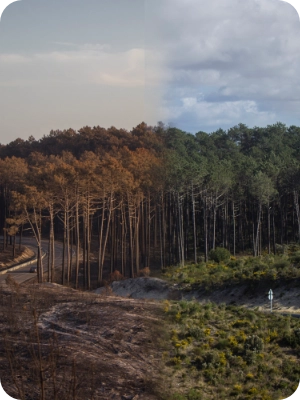
The damage caused by wildfires goes far beyond what you see in the flames. The effects can last for months, years, or even decades after a fire is put out. One of the biggest concerns is public health. Wildfire smoke contains tiny particles that can travel deep into the lungs and even enter the bloodstream. This can cause breathing problems, heart attacks, and strokes, especially in children, the elderly, and people with pre-existing health issues.
Entire cities can be covered in smoke for days or weeks, making it dangerous to go outside. Schools and businesses close. People are forced to wear masks or stay indoors. Hospitals see more patients with asthma and other lung conditions. These health problems don’t just go away when the fire is over.
The economic costs are also massive. Fires destroy homes, businesses, and infrastructure. Rebuilding takes years and costs billions of dollars. Firefighting itself is expensive, and the costs are growing as fires become harder to control. Insurance rates are rising, and in some places, people can no longer get coverage at all.
Then there are the ecological impacts, which are often overlooked. Fires destroy forests that have taken centuries to grow. Animals lose their homes and sometimes their lives. Some plants and trees may never return, especially if the soil is damaged. In many cases, wildfires leave behind burned landscapes that are more vulnerable to erosion, flooding, and invasive species.
To learn more about the long-term effects of wildfires on nature and communities, you can read this article: The Impact of Wildfires: Long-Term Effects on Ecosystems and Communities.
Solutions and Mitigation Strategies
If we want to stop climate change wildfires from getting worse, we have to act on many fronts. That means reducing greenhouse gas emissions to slow climate change, but also changing the way we manage forests, land, and communities.
One important strategy is to make forests less likely to burn. This includes controlled burns, where experts set small fires on purpose to clear out dry vegetation before it can fuel a larger blaze. Forest thinning—removing excess trees and brush—can also reduce fire risk. In places where homes are near forests, better planning and construction can help reduce the damage when fires do occur.
Communities can also become more resilient by improving early warning systems, creating evacuation plans, and educating the public about fire safety. Local governments and fire departments play a key role, but so do individuals. Everyone has a part to play in preparing for fire season.
Technology and AI in Wildfire Management
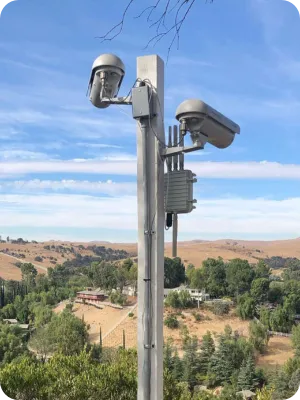
One of the most exciting areas of progress is the use of technology and artificial intelligence (AI) to detect and manage wildfires. These tools are helping us respond faster and more effectively, potentially saving lives and reducing damage.
Machine learning can analyze huge amounts of data—like weather patterns, satellite images, and past fire locations—to predict where fires are most likely to occur. This helps fire crews prepare in advance and direct resources to high-risk areas.
AI-powered cameras are being installed in forests and wildlands to detect smoke or flames in real time. These cameras use advanced image recognition to spot fires even before a human can. Once detected, alerts can be sent to emergency responders immediately. You can read more about these systems in this article: Fire and Smoke Detection Cameras.
Drones are also becoming an essential tool. Equipped with thermal sensors, they can fly over large areas and find hotspots that are hard to see from the ground. They can be used at night or in dangerous areas where it’s unsafe for humans to go. These systems are being tested and improved every year, and they may soon become a standard part of firefighting. For more on how this technology works, check out: Can Drones and Sensors Spot Fires Before They Go Wild?.
Together, these technologies offer powerful new ways to prevent fires, detect them early, and respond before they spiral out of control. But they must be part of a larger strategy that includes education, policy, and action on climate change.
Conclusion
The link between climate change and wildfires is clear, and the threat is growing. As the planet gets hotter and drier, wildfires are becoming more frequent, more intense, and more damaging. They affect our health, our homes, our forests, and our future. They also contribute to climate change themselves, creating a cycle that is hard to break.
But there is still hope. We have the knowledge, the tools, and the technology to reduce the risk of wildfires and slow down climate change. Governments must invest in prevention, land management, and emergency response. Communities must be prepared and informed. And all of us must take action to reduce our carbon footprint and support climate-friendly policies.
By working together, we can face the challenge of climate change wildfires and protect the world for future generations.
